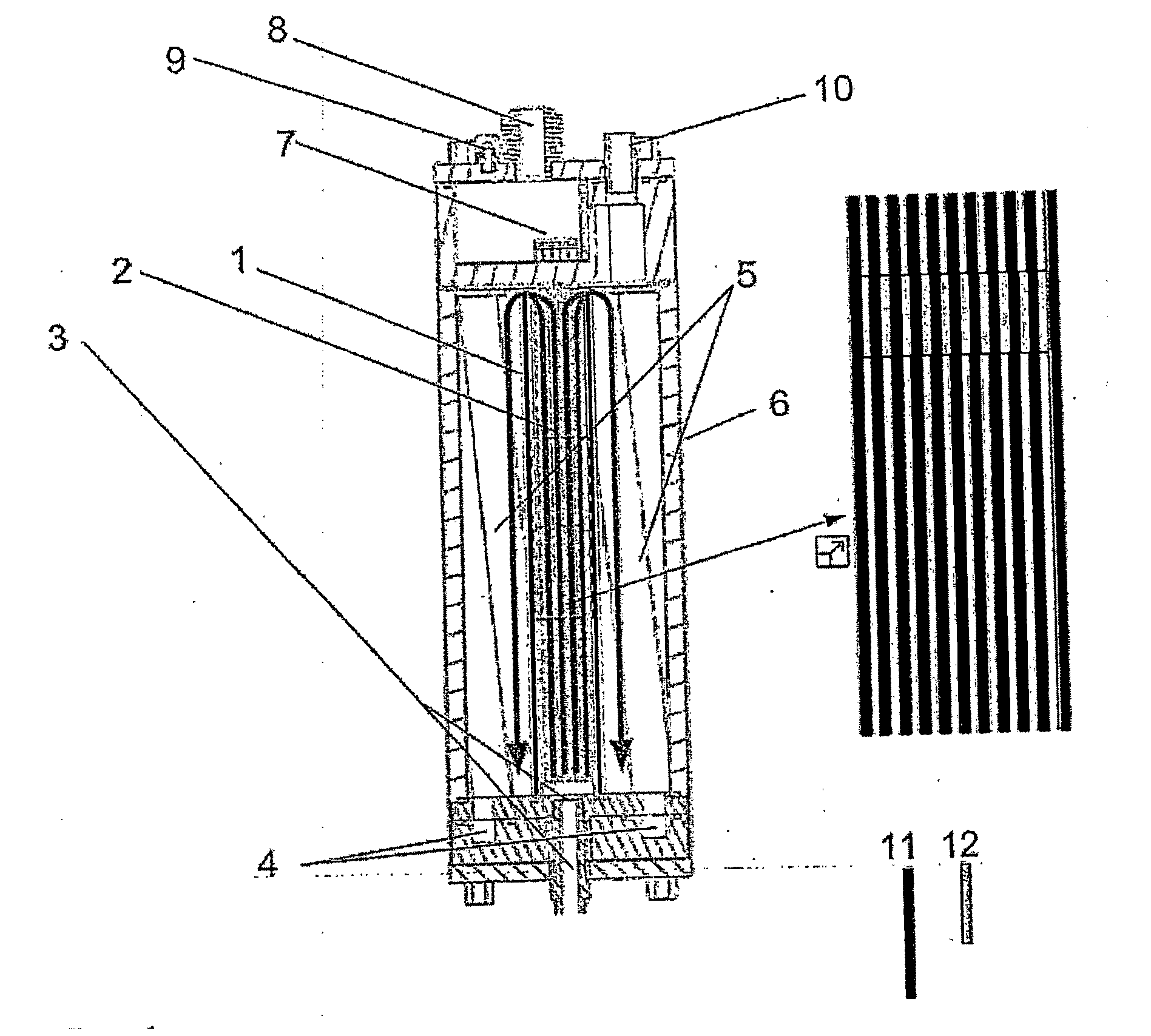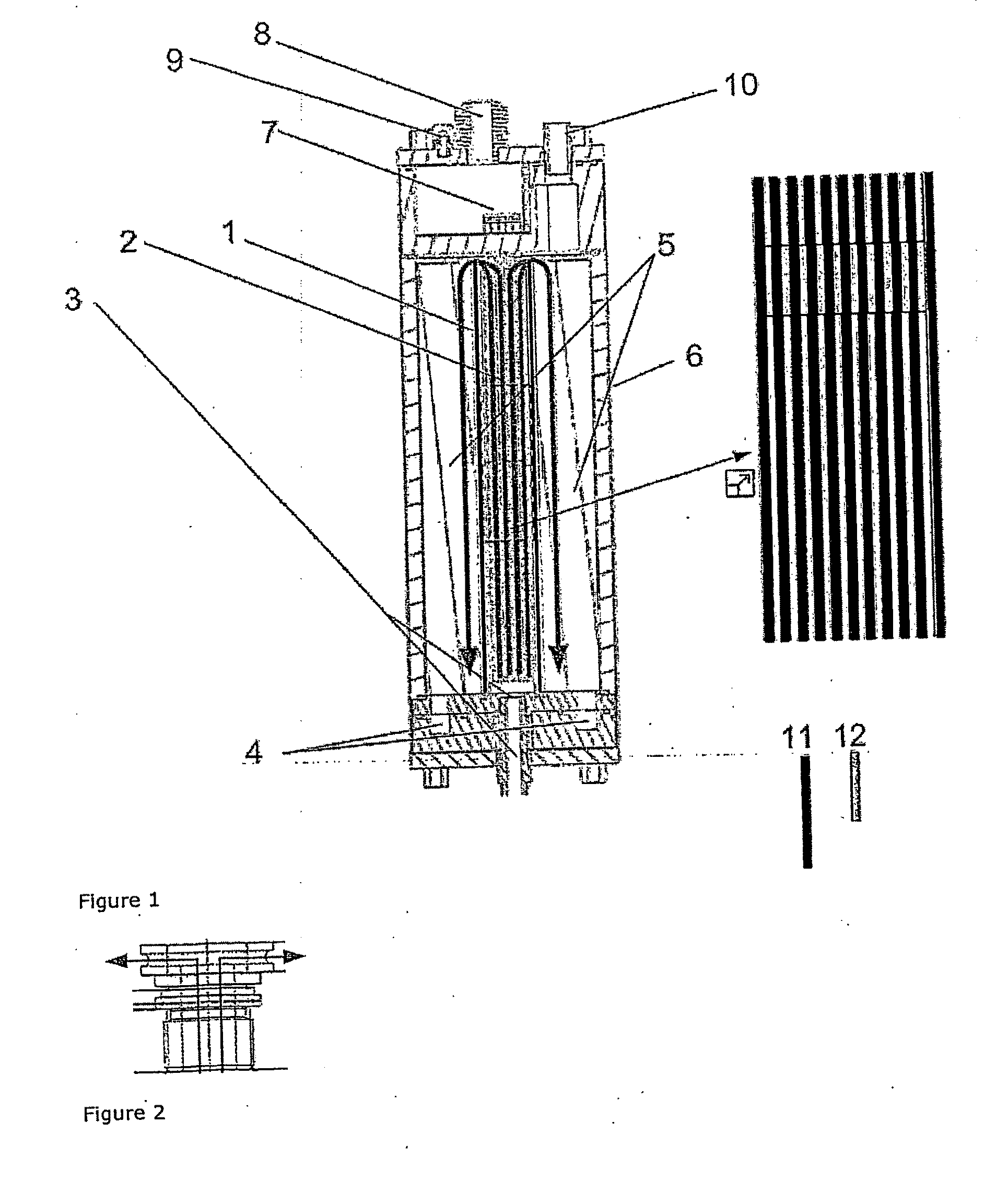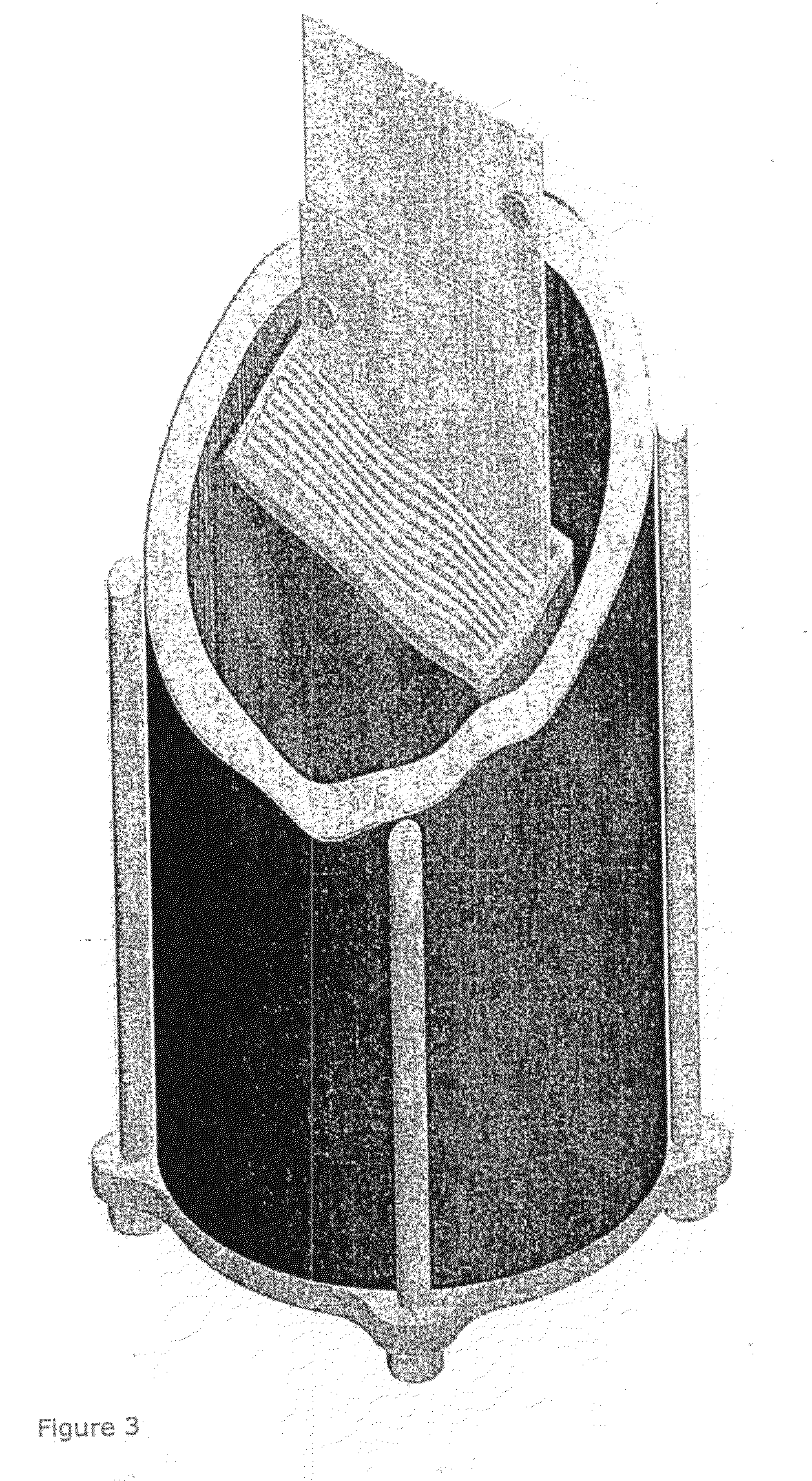Device and process for removing microbial impurities in water based liquids as well as the use of the device
a technology of microbial impurities and devices, applied in water/sludge/sewage treatment, water treatment parameter control, specific water treatment objectives, etc., can solve the problems of chemical treatment, chemical residues in water treated, and potential side effects of chemical treatment, so as to increase the operational efficiency of the system, increase the performance, and increase the effect of performan
- Summary
- Abstract
- Description
- Claims
- Application Information
AI Technical Summary
Benefits of technology
Problems solved by technology
Method used
Image
Examples
example 1
Device According to the Present Invention
[0100]A device comprising a disinfection chamber connected through a liquid inlet located in the bottom of a base area by manifold / nozzles; an inner chamber housing an electrode stack comprising eleven perforated electrode plates. The plates were made of a base of expanded titanium, and covered with a layer of platinum 2-3 micrometers thick. The plates were perforated with approximately 50% of the macro-geometric area free.
[0101]The plates were further symmetrically placed at a distance of 1.6 mm and were connected in parallel via a connector mounted at the chamber. The electrode plates had an area of 300 cm2 (width 10 cm×height 30 cm) and a thickness of 1.6 mm. The electrode plates were separated from each other and the chamber wall at the fixed distance of 1.6 mm by plastic spacers, and arranged such, that in a perpendicular plane view, the electrodes covered 80% of the area of passage. The device further comprised an outer chamber, an oute...
example 2
Treatment of Water Initially Comprising 50,000 CFU / ml
[0102]The device described in example 1 was used to treat drinking water which had been infected with about 50,000 CFU / ml of E. coli. The chloride concentration was measured to 12.5 mg / l. The current density was 15 mA / cm2. A total current of 50 A was applied.
[0103]The volumetric flow of the treated water ranged from 400 l / h to 700 l / h with a forward velocity of 3-5 cm / s, and an initial perpendicular velocity of 140-250 cm / s.
[0104]After treatment, the water contained below 200 CFU / ml.
example 3
Treatment of Water Initially Comprising 17,000 CFU / ml
[0105]The device described in example 1 was used to treat drinking water which had been infected with about 17,000 CFU / ml of E. coli. The chloride concentration was measured to 20 mg / l. The current density was 15 mA / cm2. A total current of 42 A was applied.
[0106]The volumetric flow of the treated water ranged from 400 l / h to 700 l / h with a forward velocity of 5 cm / s, and an initial perpendicular velocity of 140-250 cm / s.
[0107]After treatment the water contained below 1 CFU / ml.
PUM
| Property | Measurement | Unit |
|---|---|---|
| forward velocity | aaaaa | aaaaa |
| distance | aaaaa | aaaaa |
| current density | aaaaa | aaaaa |
Abstract
Description
Claims
Application Information
 Login to View More
Login to View More - R&D
- Intellectual Property
- Life Sciences
- Materials
- Tech Scout
- Unparalleled Data Quality
- Higher Quality Content
- 60% Fewer Hallucinations
Browse by: Latest US Patents, China's latest patents, Technical Efficacy Thesaurus, Application Domain, Technology Topic, Popular Technical Reports.
© 2025 PatSnap. All rights reserved.Legal|Privacy policy|Modern Slavery Act Transparency Statement|Sitemap|About US| Contact US: help@patsnap.com



